Friday night, April 19, an explosion at a grid-scale energy storage unit near Phoenix injured four firefighters who were investigating a report of smoke rising from the facility. The APS McMicken Energy Storage facility is operated by Fluence, a company formed by Siemens after they bought out AES Corp, the original supplier of the battery system. This energy storage facility is serving the growing amount of solar energy resources being installed in that area of Phoenix.
Grid-scale energy storage systems like this are the key to wide-scale adoption of wind or solar energy systems. Both those energy sources are super clean renewable energy, but because they’re intermittent energy storage systems are required to soak up energy for release to the grid later.
According to local![]() news
news![]() reports
reports![]() , eight firefighters from Peoria, AZ and Surprise, AZ, were called to the substation at 6 PM because of a passer-by report that smoke was coming from the site. The firefighters were evaluating the grid energy storage unit (2 megatWatt-hour battery pack) for hazardous chemical levels. They entered the facility, which is described as being the size of a mobile home, and an explosion occurred.
, eight firefighters from Peoria, AZ and Surprise, AZ, were called to the substation at 6 PM because of a passer-by report that smoke was coming from the site. The firefighters were evaluating the grid energy storage unit (2 megatWatt-hour battery pack) for hazardous chemical levels. They entered the facility, which is described as being the size of a mobile home, and an explosion occurred.
Four of the firefighters were sent to area hospitals, one in serious condition.
The location is identified from this Arizona DOT tweet:
By coincidence the ESA Energy Storage Annual Conference had a scheduled tour of an identical nearby facility, APS’s Festival Ranch Battery Energy Storage System, on April 16. This was billed as a side event available for attendees, presumably so that APS could show off how advanced their electrical grid is?
The blurb described the Festival Ranch system as:
In February this year, APS announced one of the most ambitious storage initiatives in the country. By 2025, APS will add an estimated 850 megawatts of battery storage and at least 100 megawatts of new solar generation, for a total of 950 megawatts of new clean-energy technology. The Festival Ranch project features 2-megawatt (MW)/2 megawatt-hour (MWh) Advancion grid-scale batteries that support powering specific West Valley neighborhoods in the Phoenix suburbs.
The Festival Ranch project is part of a larger test array with McMicken, an identical array built about 12 miles due east of Festival Ranch. The projects were installed at different points on the feeders to see if location adds value to power quality and reliability for customers. The Festival Ranch battery is installed at mid-circuit, while the McMicken unit is contained at the head of the feeder in an existing substation.
The two systems were built![]() during 2016 and became operational in 2017. In August 2017 a solar eclipse served as a test of the value of energy storage systems. Would the APS grid crash because it is so heavily dependent on solar energy that disappeared for the time of the eclipse? Nope. The energy storage systems kept the local grid humming.
during 2016 and became operational in 2017. In August 2017 a solar eclipse served as a test of the value of energy storage systems. Would the APS grid crash because it is so heavily dependent on solar energy that disappeared for the time of the eclipse? Nope. The energy storage systems kept the local grid humming.
That is the purpose of grid-scale energy storage systems. These are large battery packs that hold electricity, soaking up any excess electricity production from solar panels during the day, and releasing electricity when needed either to keep the lights on in the evening or to smooth out power fluctuations throughout the day. To implement 24×7 electricity off of a combination of solar and wind requires much more energy storage than pilot projects like this.
That’s the positive intended benefit of grid-scale energy storage systems. But having had a fire in one of these systems – will Regulators and other Powers-That-Be get spooked and slow down or stop deployment of these systems?
As said earlier, systems like this are critical to widespread adoption of solar energy systems.
Going by the news reports it seems APS is looking to implement distributed energy management system containing a mix of solar and energy storage resources. A subsidy program is in place for private rooftop solar systems:
Participating customers are receiving $7,200 – $30 a month over the next 20 years – to install a collective 10 MW of photovoltaic rooftop solar panels so the company can study the use of smart inverters and energy storage. APS wants to learn how to improve reliability for customers in areas where a high penetration of solar has created instability in the system. The information APS is gaining from this study will help craft what the future of renewable energy integration looks like for utilities across the country.
But what happens if the Powers-That-Be are spooked because of a battery fire? Don’t laugh — this has happened before. I believe the story is told in the book Bottled Lightning that a very early lithium-based battery system was widely deployed as a battery backup system on AT&T telephone system wiring. Because the telephone system must have its own reliable power, it has battery systems to keep power running even if the grid goes down. This early lithium-based battery system was unfortunately unstable, and a bunch of the installed batteries blew up causing much damage.
Today’s battery systems are of course far more reliable. And as we’re taught to say about the Tesla electric car battery fires — there are far more gasoline car fires per year, on a per-capita basis, than electric car fires. But you have to wonder, why are the only electric cars catching fire made by Tesla? That’s a story for another day, though.
A couple years ago a hydrogen fuel-cell bus refueling system in Emeryville CA blew up with what sounded like a spectacular fire. While the Regulators in charge of Hydrogen Fuel Cell rollout were understandably alarmed, they studied the situation, the companies involved developed technological fixes, and the development of fuel cell buses is proceeding.
Maybe that’s what will happen for grid scale energy storage systems, investigation followed by a technical fix. But, a different local news report![]() leads with the title “Solar storage facilities present unique hazard for firefighters“. A title like that seems geared to cast aspersions upon the value of grid scale energy storage. The article itself draws analogies from electric car battery fires, saying that Phoenix Fire Department personnel showed the ABC15 team video of an electric car battery “sparking and exploding” after a crash. The article went on to describe some of the alarmism, such as the risk of a battery fire reigniting itself after it appears to be “out”.
leads with the title “Solar storage facilities present unique hazard for firefighters“. A title like that seems geared to cast aspersions upon the value of grid scale energy storage. The article itself draws analogies from electric car battery fires, saying that Phoenix Fire Department personnel showed the ABC15 team video of an electric car battery “sparking and exploding” after a crash. The article went on to describe some of the alarmism, such as the risk of a battery fire reigniting itself after it appears to be “out”.
What I’m curious about it – the articles make it clear Fluence and/or APS has remote monitoring of the battery systems. Why did it take a passer-by to notice the smoke and report it to the fire department? Why didn’t the remote monitoring detect the problem?
That the explosion occurred as firefighters entered the building suggests one of two scenarios:
- Either there was a condition building up — the news report says firefighters were monitoring for 2 hours — and it coincidently built to an explosion
- Or opening the door to the battery building introduced oxygen that reacted with some chemical that had released into the air inside the battery building
According to one of the local news reports, APS has taken the local energy storage units offline while an investigation looks into the cause of the incident. APS is attributing the incident to an equipment failure. Which, um, yes, the equipment failed, it failed so hard it blew up. Please APS tell us something that isn’t plainly obvious!
february 21, 2019
aps customers get solar after sunset with major clean-energy projects
aps announces one of the largest battery storage inititatives in the United States
PHOENIX – Customers of Arizona Public Service (APS) will soon power their homes and businesses with solar after sunset thanks to three major clean-energy initiatives.
APS will add battery storage to its existing fleet of solar power plants, build new solar plants with storage, and use storage to deliver cleaner energy to customers at times of peak energy usage. As a result, APS customers will be able to use solar energy even after the sun goes down. Family dinners, prime-time television and bedtime reading lights will all be powered by a cleaner energy mix.
“Arizona is already a national leader in solar energy. The challenge is, no one has figured out how to stop the sun from setting at night,” said APS Chairman and CEO Don Brandt. “As storage technology improves and declines in cost, we will increasingly be able to store the power of the sun cost-effectively to deliver when our customers need it.”
“Large-scale battery storage is a critical step on the path to reliable and affordable clean-energy solutions,” said Pat Graham, State Director, The Nature Conservancy in Arizona. “Clean energy and clean air are important to the health of our communities and the lands and water upon which all life depends.”
APS already provides customers with an energy mix that is 50 percent clean and getting cleaner. The initiatives announced today will add 850 megawatts of battery storage and at least 100 megawatts of new solar generation by 2025, for a total of 950 megawatts of new clean-energy technology. This represents a major down payment on Arizona’s continued progress toward an energy future that is clean, reliable and affordable.
“The Energy Storage Association congratulates APS for cementing its leadership among utilities by integrating energy storage into its system operations and realizing savings for consumers,” said Kelly Speakes-Backman, CEO of ESA. “We especially applaud APS for partnering with third parties in this effort, sending a strong signal for businesses to invest in energy storage in Arizona. We look forward to that day when energy storage is the central tool for maintaining a reliable and resilient, efficient, sustainable and affordable grid.”
Adding Storage to Existing Solar Plants. APS owns and operates large-scale solar plants throughout the state that will be upgraded with 200 megawatts of battery storage systems. A team led by Invenergy will install six of the new battery systems at solar plants in Maricopa County and Yuma to be in place by 2020. The remaining two upgrades will be completed by 2021.
Building New Solar Storage Plants. APS plans to build an additional 500 megawatts of solar storage and stand-alone battery storage by 2025. The first project will be a 100-megawatt solar-storage plant. APS expects to issue a request for proposals this summer. APS is already partnering with Tempe-based First Solar to build a first-of-its-kind solar-plus-storage project that will be one of the largest in the country when completed in 2021.
Delivering More Clean Energy When Needed. When solar production declines late in the afternoon and energy usage is still high, electricity companies need a reliable, flexible source of power to serve their customers. Traditionally, that source has been exclusively natural gas. Today’s announcement signals a new direction: APS will use 150 megawatts of solar-fueled battery storage to meet part of the demand when energy usage peaks.
The battery storage will come from two projects: a 100-megawatt battery provided by AES, and a 50-megawatt battery by Invenergy. Additional natural gas will come from a contract with Calpine for 463 megawatts of energy; however, instead of a traditional 20-year contract, the purchase agreement with Calpine is seven years, allowing APS the flexibility to take advantage of cleaner technologies in the future as they mature. This is part of a long-term clean-energy transition in which renewable and storage technologies will play an increasingly important role.
Today’s announcement continues APS’s record of leadership in solar storage technology. Solana Generating Station in Gila Bend was the largest thermal solar-storage plant in the world when it began operation in 2013 and has been providing 100 percent of its generation output to APS customers since.
For more information on APS’s solar storage and other clean-energy advances, visit azenergyfuture.com.
APS serves about 2.7 million people in 11 of Arizona’s 15 counties, and is the Southwest’s foremost producer of clean, safe and reliable electricity. Using a balanced energy mix that is 50 percent carbon-free, APS has one of the country’s most substantial renewable energy portfolios, and owns and operates the Palo Verde Generating Station, the country’s top power producer and largest producer of carbon-free energy. The company is also a proven leader in introducing technology and services that offer customers choice and control over their energy consumption. With headquarters in Phoenix, APS is the principal subsidiary of Pinnacle West Capital Corp. (NYSE: PNW).
AES Introduces AdvancionTM, A Complete Battery-Based Grid Resource
Mar 06, 2014
Fourth generation grid battery solution delivers dependable, cost-competitive energy storage for utilities and renewable developers
ARLINGTON, Va.–(BUSINESS WIRE)–Mar. 6, 2014– AES Energy Storage today introduced AES Advancion, a complete battery-based grid resource – delivering the services expected from peaking power plants, with added benefits. Advancion is the fourth generation of AES-designed grid energy storage solutions and is now offered to utility companies and renewable developers in select markets. The offering incorporates six years of commercial experience developing, owning and operating storage assets, bringing utility buyers a smart, cost-competitive solution within established industry business models. With 200 MW of storage resources deployed and in construction and over 1.5 million MW-h of service delivered, AES is an established leader in providing dependable grid-scale energy storage solutions to utilities and power markets.
“Looking at the challenges faced by utilities and power markets today, we developed a complete and cost-effective battery-based solution for power reliability,” said Chris Shelton , President, AES Energy Storage. “The Advancion storage offering is a natural extension of our business platforms, serving utilities, power systems, and their customers.”
Advancion acts as both a generation and load resource, enabling more than twice the flexible range of a peaker plant on the same size interconnection. It is continuously available without burning fuel and was designed with the ability to tap into existing unused capacity from efficient natural gas combined cycle power plants, solar and wind facilities. Unlike traditional power plants, Advancion arrays can scale over time with the ability to match required load growth in lock step.
About AES Advancion
There are three components of the AES Advancion storage offering:
- Advancion Battery Array: A comprehensive technical foundation comprised of AES-certified battery technology and power conversion equipment, Advancion Controls, patented Advancion Application Agents, and safety and climate systems.
- Planning and Deployment Service: The turnkey delivery of Advancion arrays, from siting and permitting, to interconnection and facility design, and fully managed engineering, procurement and construction.
- Operations and Maintenance Service: Operations, safety, and maintenance management services, built on AES’ energy storage track record – delivering safe, reliable performance for customers.
AES Advancion customer solutions can be tailored to specific market needs in terms of power and duration. Arrays are made of several units and delivered in sizes ranging from tens of megawatts to hundreds of megawatts with durations of thirty minutes to four hours or more.
“Utility industry stakeholders are looking to modernize with advanced technologies that offer superior reliability and scalability for more efficient grid operation. They’re asking for smart and cost effective alternatives, especially for their resource adequacy and flexibility needs,” said John Zahurancik , Vice President, AES Energy Storage. “We’ve listened to their concerns and designed Advancion to deliver dependable utility class operating performance, maintenance and safety.”
Availability
Advancion is now available to utility buyers and renewable developers in PJM, California, Hawaii, Puerto Rico, UK, the Philippines, and other markets. For more information, please visit www.aesenergystorage.com.
About AES Energy Storage Solutions
AES is a leader in commercial energy storage partnerships, which enable utilities, power markets and renewable developers to manage projects from concept to operation. The company’s energy storage solutions unlock value from existing power infrastructure, liberating reserve capacity, enabling renewable facilities to generate new revenue streams, improving flexibility and reliability of the power system, and meeting peak power demand. With 200 MW of storage-based resources in operation and construction, AES has the largest fleet of battery-based storage assets in commercial operation today. The company has over 1,000 MW in development with prospects in the US and abroad. To learn more, please visit www.aesenergystorage.com or @aes_es on Twitter.
About AES
The AES Corporation (NYSE: AES) is a Fortune 200 global power company. We provide affordable, sustainable energy to 21 countries through a diverse portfolio of distribution businesses as well as thermal and renewable generation facilities. Our workforce of 22,000 people is committed to operational excellence and meeting the world’s changing power needs. Our 2013 revenues were $16 billion and we own and manage $40 billion in total assets.
Safe Harbor Disclosure
This news release contains forward-looking statements within the meaning of the Securities Act of 1933 and of the Securities Exchange Act of 1934. Forward-looking statements are not intended to be a guarantee of future results, but instead constitute AES’s current expectations based on reasonable assumptions. Actual results could differ materially from those projected in AES’s forward-looking statements due to risks, uncertainties and other factors. Important factors that could affect actual results are discussed in the Tender Offer Materials related to the Tender Offers and AES’s filings with the SEC, including, but not limited to, the risks discussed under Item 1A “Risk Factors” and Item 7 “Management’s Discussion & Analysis of Financial Condition and Results of Operations” in AES’ 2013 Annual Report on Form 10-K and in subsequent reports filed with the SEC. Readers are encouraged to read AES’s filings to learn more about the risk factors associated with AES’s business. AES undertakes no obligation to update or revise any forward-looking statements, whether as a result of new information, future events or otherwise.
Anyone who desires a copy of AES’s 2013 Annual Report on Form 10-K dated February 26, 2014 may obtain a copy (excluding Exhibits) without charge by addressing a request to the Office of the Corporate Secretary, The AES Corporation, 4300 Wilson Boulevard, Arlington, Virginia 22203. Exhibits also may be requested, but a charge equal to the reproduction cost thereof will be made.
LG Chem to Supply Battery Modules for AES Energy Storage Advancion® Solution
Global Gigawatt-Hour Agreement Ensures Advancion Customers Gain Access to High Quality, Low-Cost Battery SupplyDecember 15, 2015 05:10 PM Eastern Standard Time
ARLINGTON, Va. & SEOUL, Korea–(BUSINESS WIRE)–AES Energy Storage and LG Chem today announced a multi-year agreement that provides access to a gigawatt-hour (GWh) of lithium-ion battery capacity with the option to procure additional capacity for the AES Advancion® energy storage solution. Utilities, developers, and power system operators seeking to install storage to lower costs, improve reliability, and reduce emissions will benefit from the combination of AES, the leading grid-scale energy storage integrator, and LG Chem, the leading battery supplier.
The agreement covers the supply of several of LG Chem’s battery modules that have been designed and configured for AES’ Advancion grid-scale energy storage solution. The agreement provides access to batteries to meet the needs of Advancion installations currently under construction and allows AES to purchase additional batteries to meet the growth for future Advancion system sales. For reference, 1 GWh of batteries is capable of powering 250 – 1,000 MW of energy storage installations, depending on the needs of the customer.
The global grid-scale energy storage sector has entered a new growth phase, with more than 1,400 MW of advanced energy storage projects announced or in operation today, compared to less than 60 MW just six years ago. Navigant Research projects that more than 11 GW of energy storage capacity will be installed annually by 2020 across 22 countries. AES previously announced installations for various customers in six countries totaling 384 MW in operation, construction, or late stage development, representing the world’s largest fleet.
“We are excited to provide utilities, developers, and businesses access to high quality batteries at the best prices as part of the complete Advancion grid storage solution,” said John Zahurancik, President of AES Energy Storage. “LG Chem is one of our most trusted battery partners and this agreement provides a new scale of activity to serve announced projects as well as installations under development by our utility partners.”
This groundbreaking agreement leverages LG Chem’s manufacturing and supply chain from the transportation sector and ensures access to the most cost-effective, high quality batteries available today to supply Advancion. AES designed Advancion for sale to third party utilities, independent power producers, and power system operators seeking a proven and future-proofed energy storage technical platform. Advancion 4, AES’ fourth generation integrated energy storage solution, incorporates insights from serving utilities globally for more than 30 years and lessons learned from more than eight years of real world operations of large-scale, grid-connected battery systems built to serve the needs of a long-term asset owner. Advancion 4 is the only deployed platform that enables long-term system performance and degradation management from the start with a unique system architecture, allowing future upgrades to take advantage of the best components at the time.
“AES is one of the world’s most experienced and well-respected integrators of grid-scale energy storage systems, and we are proud to provide our lithium-ion batteries for their Advancion solution,” said Ungbeom Lee, President of LG Chem’s Energy Storage Solutions business unit. “Our agreement provides a roadmap for us to engage most effectively in the delivery of high performance, reliable and cost-effective energy storage systems around the world.”
LG Chem has achieved market leadership in the highly competitive market for HEV and EV battery systems, where product performance, quality, durability and cost are prerequisites. Battery cells for automotive and stationary storage systems are manufactured to the same exacting quality standards at facilities in Korea and the United States. The supply agreement covers battery modules with configurations ranging from 30 minutes to 4 hours of discharge duration. AES and LG Chem have also agreed to collaborate on joint development initiatives that will ensure continued competitiveness of the Advancion product in meeting the requirements of utilities and system operators around the world.
In 2014, LG Chem was the first of several battery manufacturers to complete the Advancion Certification process and become a qualified supplier of batteries for Advancion 4. Subsequently, LG Chem was selected to provide batteries for three large-scale Advancion arrays, including the Warrior Run Energy Storage Array that was officially opened on November 13, 2015.
About AES Energy Storage
AES is a leader in commercial energy storage solutions, which improve flexibility and reliability of the power system, and provide customers with a complete alternative to traditional peaking power plants. The company’s Advancion® 4 energy storage solution is available for sale to leading utilities, power markets, and independent power producers, and AES can manage installations from concept to operation with a market-proven solution that integrates best in class battery and power conversion technologies. AES introduced the first grid-scale advanced battery-based energy storage solution in commercial operations in 2008 and operates the largest fleet of battery-based storage assets in service today. AES has a total of 384 MW of interconnected energy storage, equivalent to 768 MW of flexible resource, in operation, construction or late stage development in six countries. To learn more, please visit www.aesenergystorage.com or @aes_es on Twitter.
About AES
The AES Corporation (NYSE:AES) is a Fortune 200 global power company. We provide affordable, sustainable energy to 18 countries through our diverse portfolio of distribution businesses as well as thermal and renewable generation facilities. Our workforce of 18,500 people is committed to operational excellence and meeting the world’s changing power needs. Our 2014 revenues were $17 billion and we own and manage $39 billion in total assets. To learn more, please visit www.aes.com. Follow AES on Twitter @TheAESCorp.
About LG Chem
LG Chem Ltd. is one of the world’s largest lithium-ion battery manufacturers with significant market share in consumer, automotive and stationary applications. LG Chem, Ltd. is a globally diversified chemical company which operates three main business units: Petrochemicals, IT & Electronic Materials, and Energy Solutions. The company manufactures a wide range of products, from petrochemical goods to high-value added plastics, and extends its chemical expertise into high-tech areas such as electronic materials and rechargeable batteries.
- Is there enough Grid Capacity for Hydrogen Fuel Cell or Battery Electric cars? - April 23, 2023
- Is Tesla finagling to grab federal NEVI dollars for Supercharger network? - November 15, 2022
- Tesla announces the North American Charging Standard charging connector - November 11, 2022
- Lightning Motorcycles adopts Silicon battery, 5 minute charge time gives 135 miles range - November 9, 2022
- Tesla Autopilot under US Dept of Transportation scrutiny - June 13, 2022
- Spectacular CNG bus fire misrepresented as EV bus fire - April 21, 2022
- Moldova, Ukraine, Georgia, Russia, and the European Energy Crisis - December 21, 2021
- Li-Bridge leading the USA across lithium battery chasm - October 29, 2021
- USA increasing domestic lithium battery research and manufacturing - October 28, 2021
- Electrify America building USA/Canada-wide EV charging network - October 27, 2021





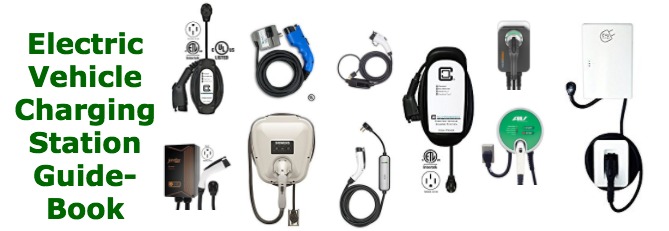

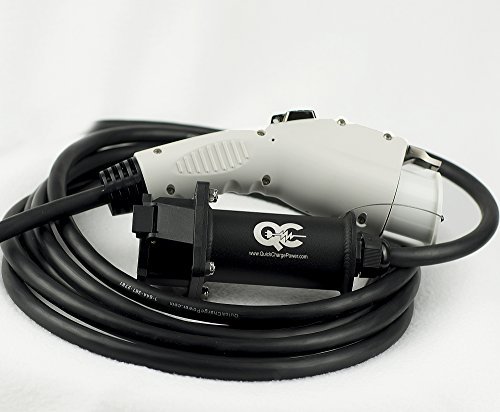

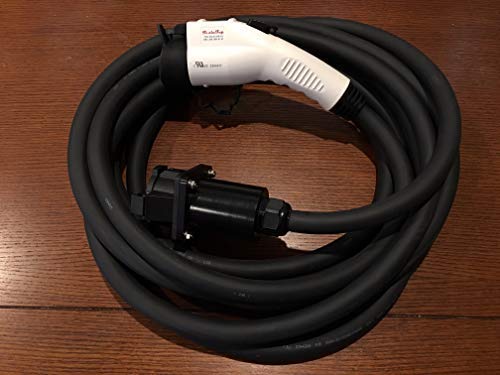







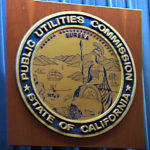
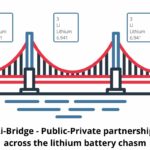
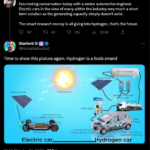


Thank you very much for a tremendously well-informed article.